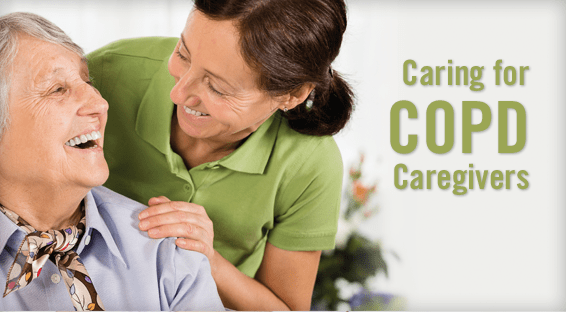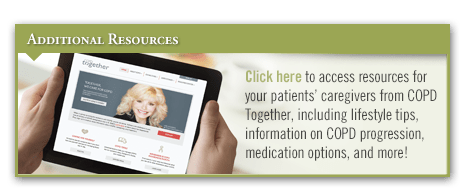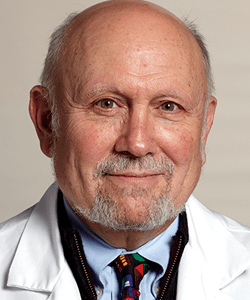As COPD progresses, patients with the disease experience more frequent bouts of shortness of breath and exacerbations. Activities of daily living become increasingly difficult, often leaving family members to take over household chores that had always been performed by their loved one with COPD. These individuals may also have more frequent visits to the emergency department (ED) that result in hospitalization, which in turn can take family caregivers away from their preferred lifestyles and cause tremendous stress.
Addressing Caregiver Burden
The burden placed on family caregivers is worsening because COPD continues to rise in prevalence and is now the third leading cause of death worldwide, according to the World Health Organization. “Unfortunately, public awareness of COPD is very low,” says Sidney S. Braman, MD, FACP, FCCP. “Any efforts to increase awareness have focused mostly on patients and their suffering, but there has been little focus on family members and the impositions placed on them that come with caring for a person with COPD.”
To help highlight COPD as a progressive disease with a large impact on family caregivers, the COPD Foundation, with support from Sunovion Pharmaceuticals Inc., developed the COPD Together campaign. The campaign’s website—www.copdtogether.com—helps family caregivers understand the disease and its progression. It also provides information on avail-able medications and other treatment options, such as pulmonary rehabilitation, as well as preventative options. Lifestyle tips, information on self-care, and a COPD caregiver’s guide are other important features of the campaign.
“COPD patients and their caregivers can both use the My Diary tool to track medications, satisfaction levels, and symptom occurrence and progression,” adds Dr. Braman. “This tool can aid communication with providers and enhance patient and caregiver understanding of COPD. By monitoring symptoms, caregivers may be more likely to recognize symptoms and disease progression. Doing so may also encourage patients to obtain care early. The longer that COPD symptoms occur, the more likely patients are to be admitted to the hospital if they go to the ED.”
Explaining Disease Progression
To help family caregivers recognize disease progression, Dr. Braman recommends that providers explain to caregivers that chronic cough and sputum expectoration are negative signs of worse and more frequent COPD exacerbations and greater mortality. “These symptoms should be recognized by caregivers as signs that something needs to be done,” Dr. Braman says. “If the COPD patient is a smoker, the family caregiver can help urge him or her to stop.”
As COPD progresses, the exacerbations occur more often, but many patients are afraid to admit they are having problems, according to Dr. Braman. “In these cases, caregivers can be helpful in getting patients to take medications that can improve quality of life, manage shortness of breath, and reduce exacerbations,” he says. “In the more severe stages, complications like heart failure begin to occur. Family members should be taught to recognize weight gain and ankle swelling in a loved one with COPD as early signs of a lack of oxygen in the blood and oncoming heart failure.” Dr. Braman also suggests that caregivers be made aware of the increased prevalence of diabetes, metabolic syndrome, osteoporosis, coronary artery disease, and depression among people with COPD. In addition, he recommends that they learn about symptoms that may be signs of these conditions.
Helping Caregivers Care for Themselves
“Healthcare providers need to explain to caregivers that the stress of caring for someone with COPD can be detrimental to their health,” explains Dr. Braman (Table 1). “This impact on their health needs to be recognized and explored with primary care providers. Family caregivers need to be made aware that they don’t have to do it all on their own. Visiting nurse programs can help with anything from assuring medication adherence to bathing and help with dietary choices. Attending a patients’ pulmonary rehabilitation program can provide care-givers with important education about proper inhaler use techniques, dietary issues, and more. This help can give caregivers a better understanding of COPD in their efforts to assist their loved ones in the management of the disease.” Additional lifestyle tips that physicians can provide to caregivers are listed in Table 2.
Dr. Braman says that because of a growing recognition that COPD is increasingly impacting the healthcare system negatively, the disease has gained the attention of national bodies like CMS as well as healthcare systems and insurance companies. “As a result, we’ve seen much growth in the number of resources available to patients and their families,” he says. “Our hope with the COPD Together program is to highlight these resources for patients and caregivers, and to provide them with empowering information.”




 TimH
TimH